MEET THE GIRAFFE EXPERT
Introducing Dr Arthur Muneza, East African coordinator for the Giraffe Conservation Foundation (GCF) and expert on all things related to the world’s tallest animal! We interviewed him about the recent name change for the Rothschild’s giraffe, now known as Nubian giraffe, as well as his role in conserving giraffes across Kenya, Tanzania, Uganda and Ethiopia. For all giraffe lovers out there, this is a highly informative and interesting read.
Firstly, tell us a bit more about yourself.
I’m 34, was born in Rwanda but grew up in Kenya. I’m one of the few giraffe specialists in Africa and have a Biology degree from the Catholic University of Eastern Africa in Nairobi and a Masters and PhD from Michigan State University in the USA, both of which focused on giraffe ecology. My Masters examined giraffe skin disease, mapping where it occurs in Africa and in what forms. My PhD focused on assessing the impact of disease and human activities on giraffe survival in Kenya and Tanzania. Also, I assessed whether the disease influenced lion-giraffe interactions, as well as socio-economic factors affecting giraffe poaching.
Dr Arthur Muneza, East African coordinator for the Giraffe Conservation Foundation ▶
There used to be one giraffe species. Why did the Giraffe Conservation Foundation decide to split the giraffe into four separate species?
First of all, it’s important to note that GCF ‘did not decide to split giraffe’ – we just used a little bit of science to find out more about giraffe taxonomy and this is what came up. Traditionally, it was believed that giraffes existed as one species with nine subspecies. However, this was based on data from mid-1700s, modified slightly in the 1960s. Since then, technology and genetic research has greatly improved. GCF has undertaken one of the most detailed genetic sampling programmes of any species and worked with various partners across the world to better understand the genetic make-up of all populations of giraffe in Africa. Based on the genomic data, we now maintain there are four distinct giraffe species in Africa and seven subspecies.
Arthur and his colleague Adams Kipchumba, also from the Giraffe Conservation Foundation, at Giraffe Manor during this interview
What are the four giraffe species?
There’s the northern, reticulated, Masai and the Southern giraffe. Northern giraffes are split into three subspecies: Kordofan, Nubian and West African. Masai giraffes are split into two subspecies: Masai and Luangwa. Southern giraffes are split into South African and Angolan subspecies. Reticulated giraffes don’t have a subspecies.
Until recently, giraffes existed as one single species with nine subspecies. We now maintain that there are four distinct species in Africa.
The Rothschild’s giraffe, which is the species living at Giraffe Manor, has recently been reclassified as Nubian giraffe. What’s the science behind this change?
This reclassification is a result of new scientific information. We worked with conservation partners to collect and analyse the largest ever number of samples from all living giraffe species throughout Africa and found that Rothschild’s and Nubian giraffe are genetically identical – they also look the same! Given that Nubian giraffe were ‘discovered’ first (nominate) and the name ‘Nubia’ has a clear link to a region in Africa (along the River Nile in Sudan and Egypt, where giraffes first became known to science), under taxonomic guidelines it is proposed to keep the name Nubian over Rothschild’s.
We envision a world where giraffes can live wild and free within their historical ranges and habitats throughout Africa, protected by the people around them.
Can you tell us more about the history behind both names, Rothschild’s and Nubian?
Rothschild’s giraffe were named after the British zoologist and banker Walter Rothschild, while Nubian giraffe were named after the region where giraffes were first described in Africa.
What does this mean for the future of Nubian and Northern giraffe?
Nubian giraffe are now considered a subspecies of the northern giraffe, which also includes the Kordofan and West African giraffe. Fortunately for Nubian giraffes, this means they now have a greater geographic range, however, we also realise they have faced steeper declines than initially thought. From the work that we have done with our partners, we now have a better understanding on their taxonomy, numbers and distribution and maintain that Nubian giraffe, after considering all the available population numbers, still qualify to be listed as ‘critically endangered’ on the IUCN Red List of Threatened Species.
Can you give an indication of how each species is doing?
The conservation status of each of the four species varies quite a lot. Northern giraffe (which includes the West African, Nubian and Kordofan subspecies), currently face the most threats. Although in Niger, the West African subspecies is increasing due to focused conservation efforts from the community, government and NGOs. Kordofan and Nubian giraffe have sadly declined significantly in the past 35 years due to habitat loss, fragmentation and poaching, and more conservation efforts are required. Masai and reticulated giraffe have also declined substantially in recent years and are now both listed as ‘endangered’ on the IUCN Red List . In contrast, the Southern giraffe have increased in the last few decades as a result of good conservation efforts on public, private and communal land.
A journey of Reticulated giraffe at Siruai Mobile Camp, Suiyan conservancy
In Kenya, we have three giraffe species: the Masai, reticulated and Nubian. No other country in Africa has as many varieties. The country has worked hard to protect them in recent years and in 2018, Kenya became the second African country to launch a national giraffe conservation recovery plan. This raised the profile of giraffes in terms of conservation actions needed to protect the different species in Kenya.
Reticulated giraffes enjoying lunch near Sasaab
What is the goal of the GCF in Africa?
GCF is a voice for giraffe. We are dedicated to securing a future for all giraffe populations in the wild. We envision a world where all giraffe species can live wild and free within their historical ranges and habitats throughout Africa, protected by the people around them. Primarily a conservation organisation, we use the scientific data we collect on giraffes to inform governments and local communities about how best to manage their giraffe populations.
Arthur in action fitting a GPS tracking unit to the tail of a Masai giraffe near Amboseli.
We’re currently involved in giraffe conservation initiatives in 20 African countries. In Kenya, we recently tagged Masai giraffes in the Amboseli ecosystems as part of the Twiga Tracker initiative, the largest GPS study ever conducted on giraffes. You can watch a short film about it below.
An estimated 117,000 wild giraffes remain in all of Africa.
How many giraffes remain in Africa?
We currently estimate about 117,000 throughout Africa. In the past fifty years there has been a marked decline of giraffes, like almost all wildlife species in Africa. The population now appears to be steady, although it’s hard to say, because recent increases or changes to the conservation status are partly a result of increased surveys as well as increased conservation efforts by GCF and our many partners. Up until recently, giraffes were not studied as much as other iconic African species. We are now gaining a better understanding of their numbers and distribution and have helped to put the importance of their conservation on a global stage.
Reticulated giraffe near Sasaab
What are the major threats to giraffes in Africa?
Habitat loss and fragmentation – There is huge demand for land in Africa by a very young and growing population. There is a lot of transformation of landscapes from natural habitat – on which wildlife depends – to farming, agriculture and urban development. Fences are going up and roads are being built. These all stop wildlife from moving easily between areas and put pressure on animals like giraffe within the remaining areas.
Illegal poaching and snaring are also an issue in areas where bushmeat is a source of protein and income. Giraffe are often targeted for their meat, and to a lesser extent for their skin, bones and tail hair. In some areas where giraffe may not be the target species, snares can still severely injure them or even lead to death if there is no immediate intervention.
Giraffe are often targeted by poachers for their meat, and to a lesser extent for their skin, bones and tail hair.
Tannin poisoning – this is an issue related to habitat loss and fragmentation, as well as climatic conditions. Giraffes feed predominantly on Vachellia and Senegalia (formerly Acacia) trees. However, some plant species produce higher levels of tannin in their leaves as a deterrent to prevent the tall animal from browsing excessively on any one tree. So when giraffes are forced to eat from such trees because their movement has become restricted, or due to limited food availability associated with increased dry periods, they ingest unhealthy levels of tannin, limiting energy intake, preventing proper digestion and causing poor physical condition. It’s very important that giraffes have large areas in which to roam and feed, especially as the climate is changing.
Reticulated giraffe
Climate change – this plays a part, as highlighted above, although giraffes are quite resilient to drought and do not have to drink as often as other water-dependent animals like zebra, wildebeest, buffalo and impala. However, indirect effects of climate change pose a serious threat, for example when pools dry up giraffes can get stuck in the mud around waterholes and end up dying trying to get out or they can be surprised by flash floods in seasonally flowing rivers.
How does the GCF work with Giraffe Manor?
After KWS, Giraffe Manor is one of our most important partners in Kenya and contributes significant funds to our conservation efforts. We enjoy working with the Manor team and their guests as a platform to share what we know about giraffes both within the country and internationally.
Want to help protect wild giraffes across Africa? Consider joining our herd and sponsoring one of our family of Nubian giraffes living at Giraffe Manor! 50% of every sponsorship donation goes directly to the Giraffe Conservation Foundation to support their conservation efforts across Africa.
RELATED NEWS

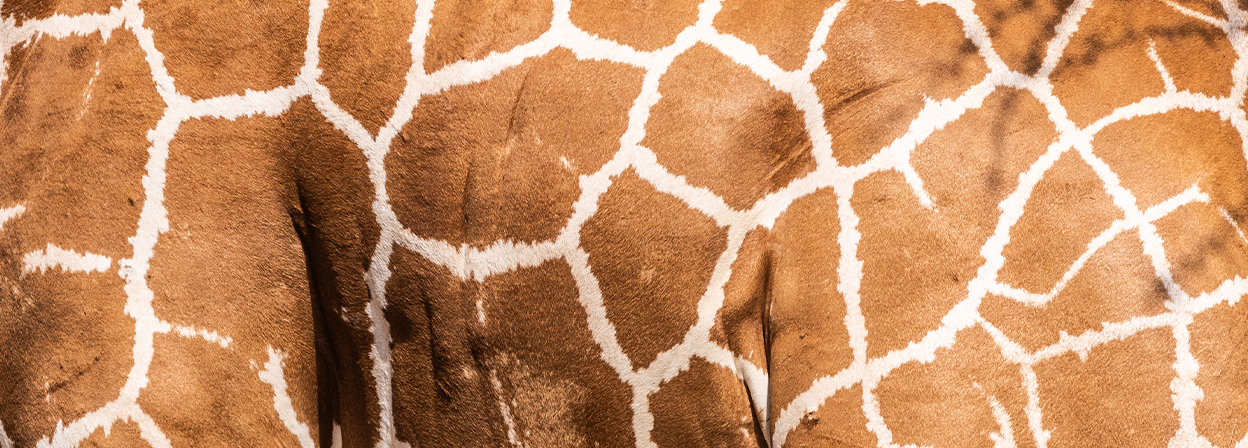
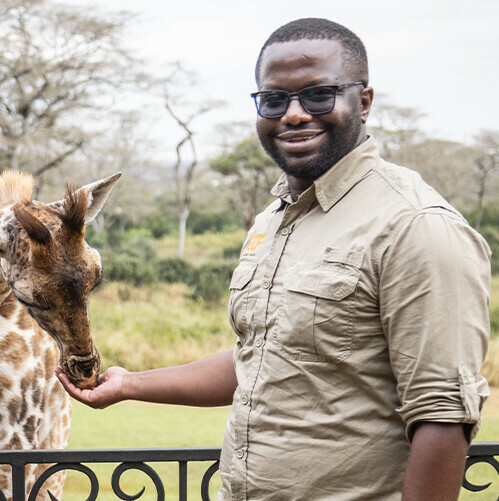
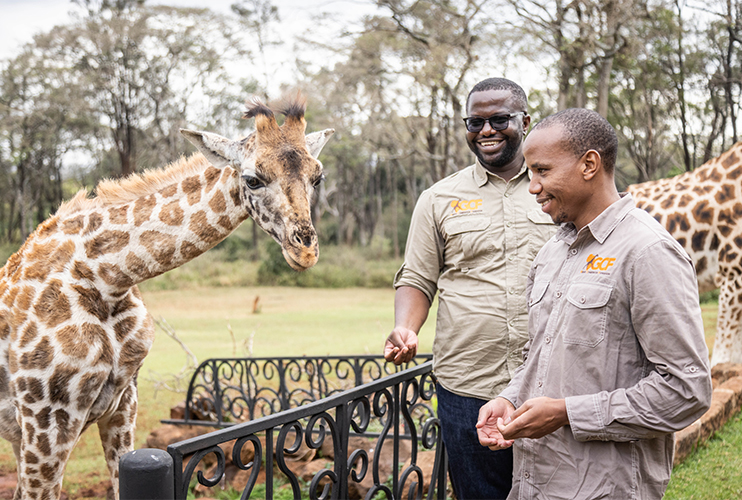
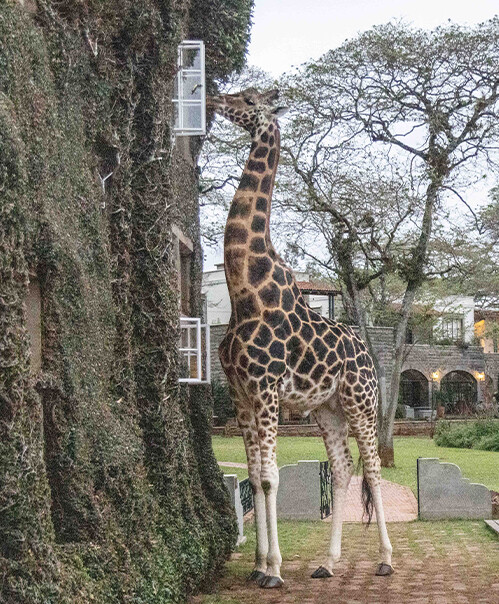
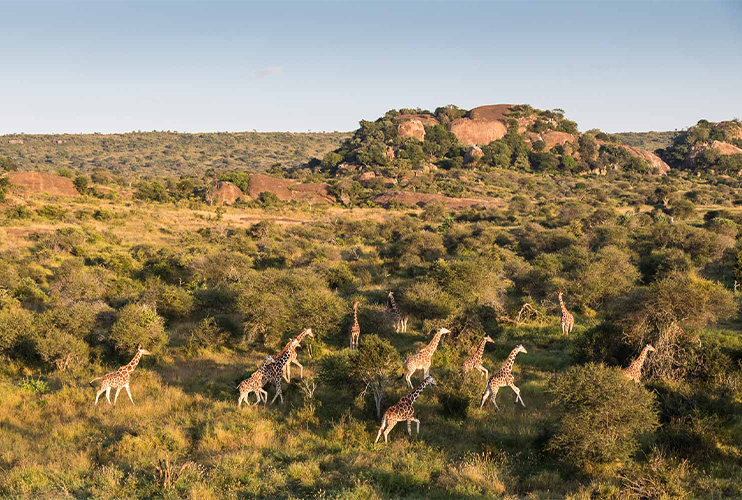
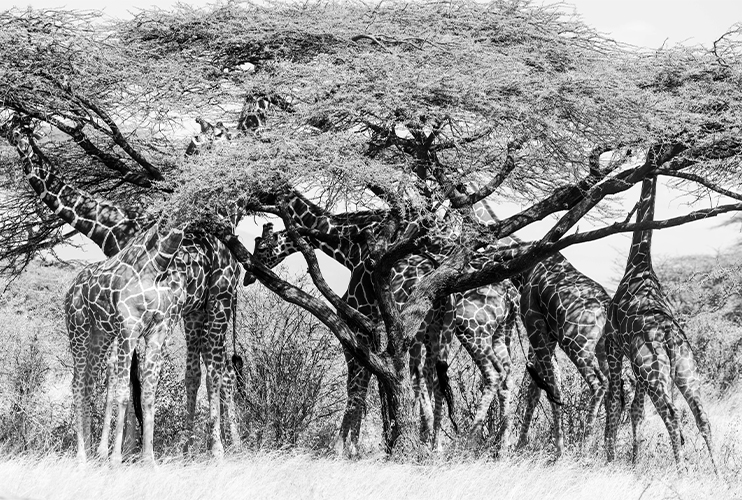
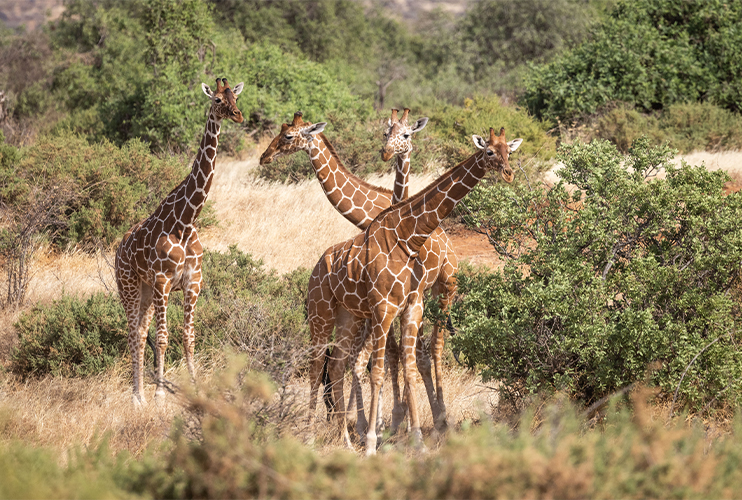
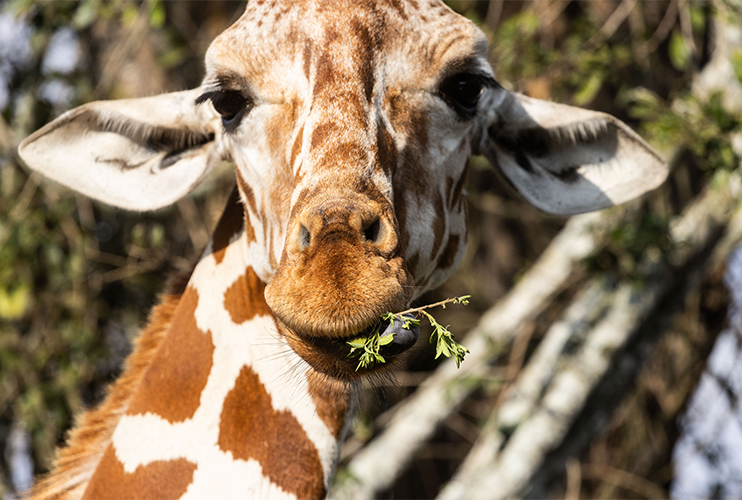
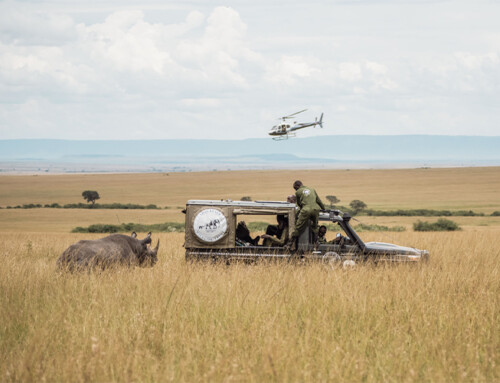
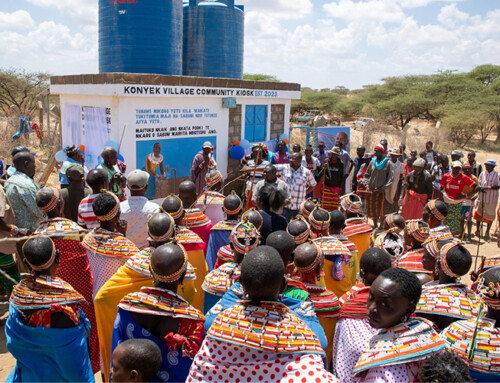
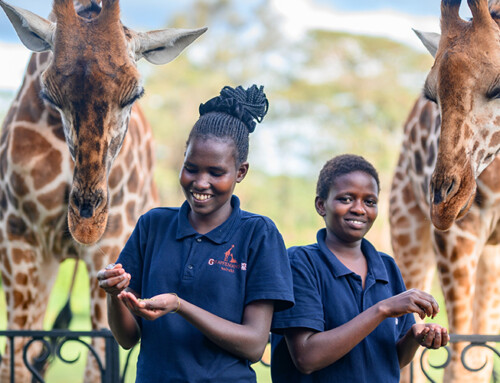
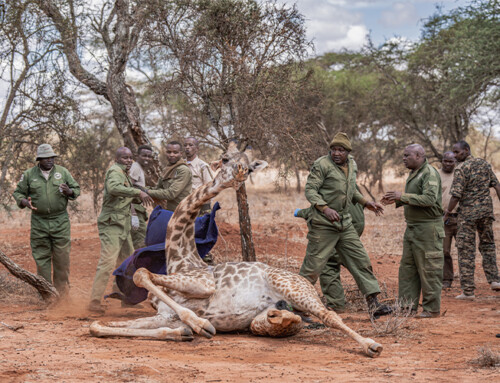

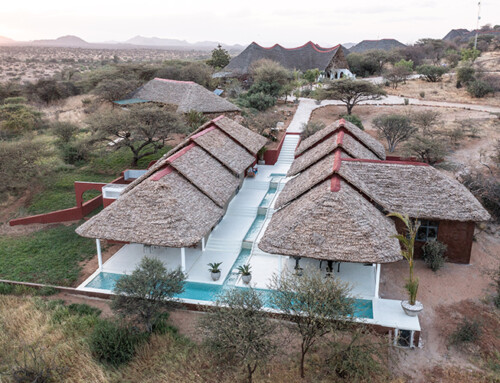
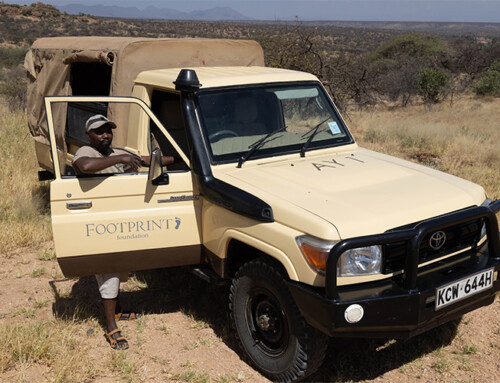
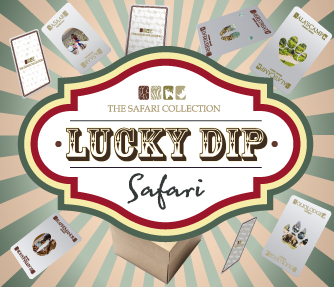





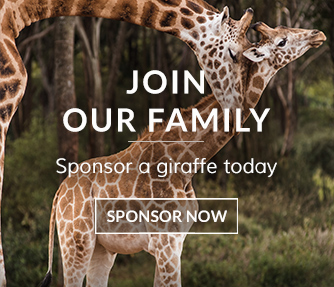
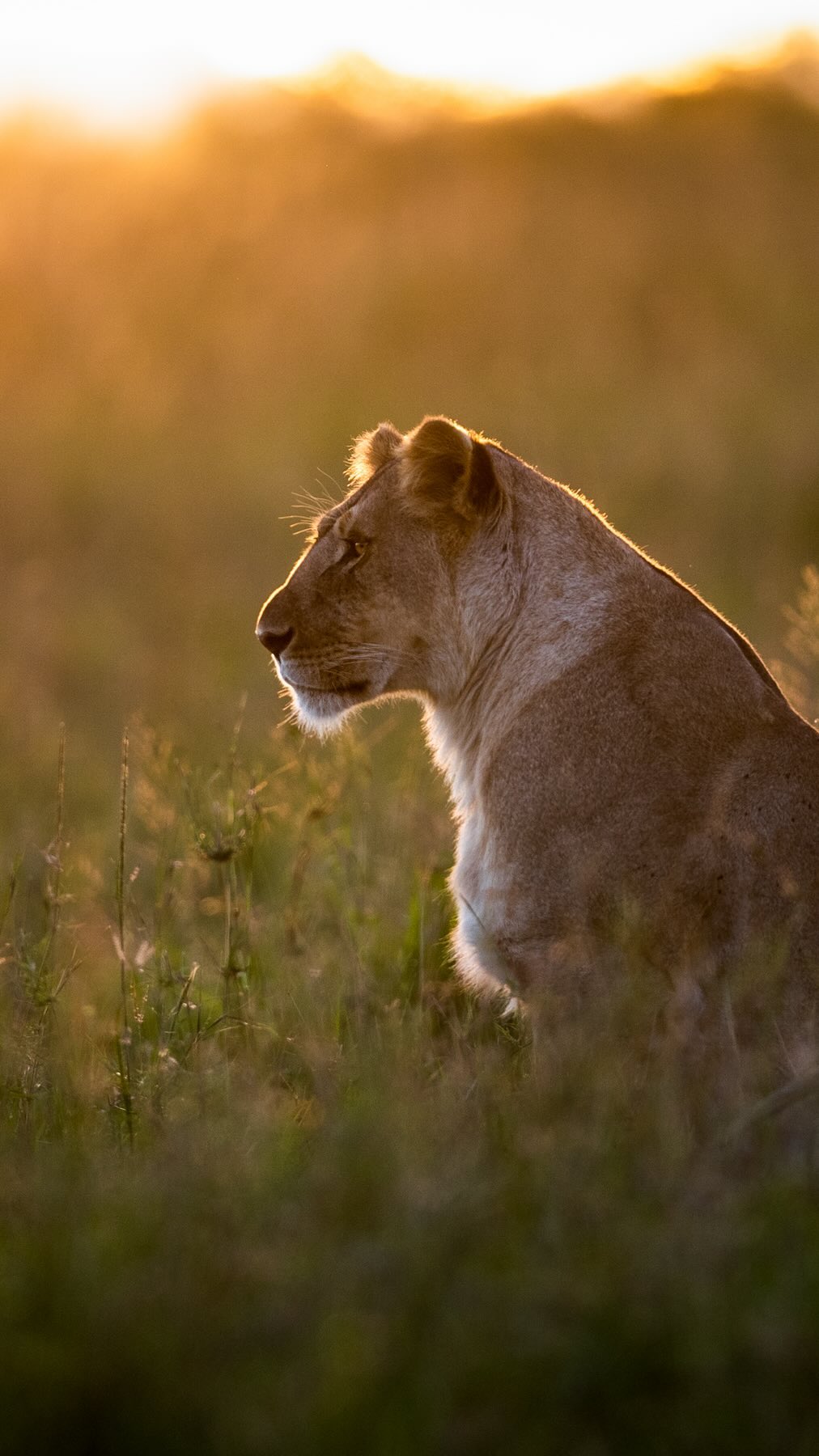
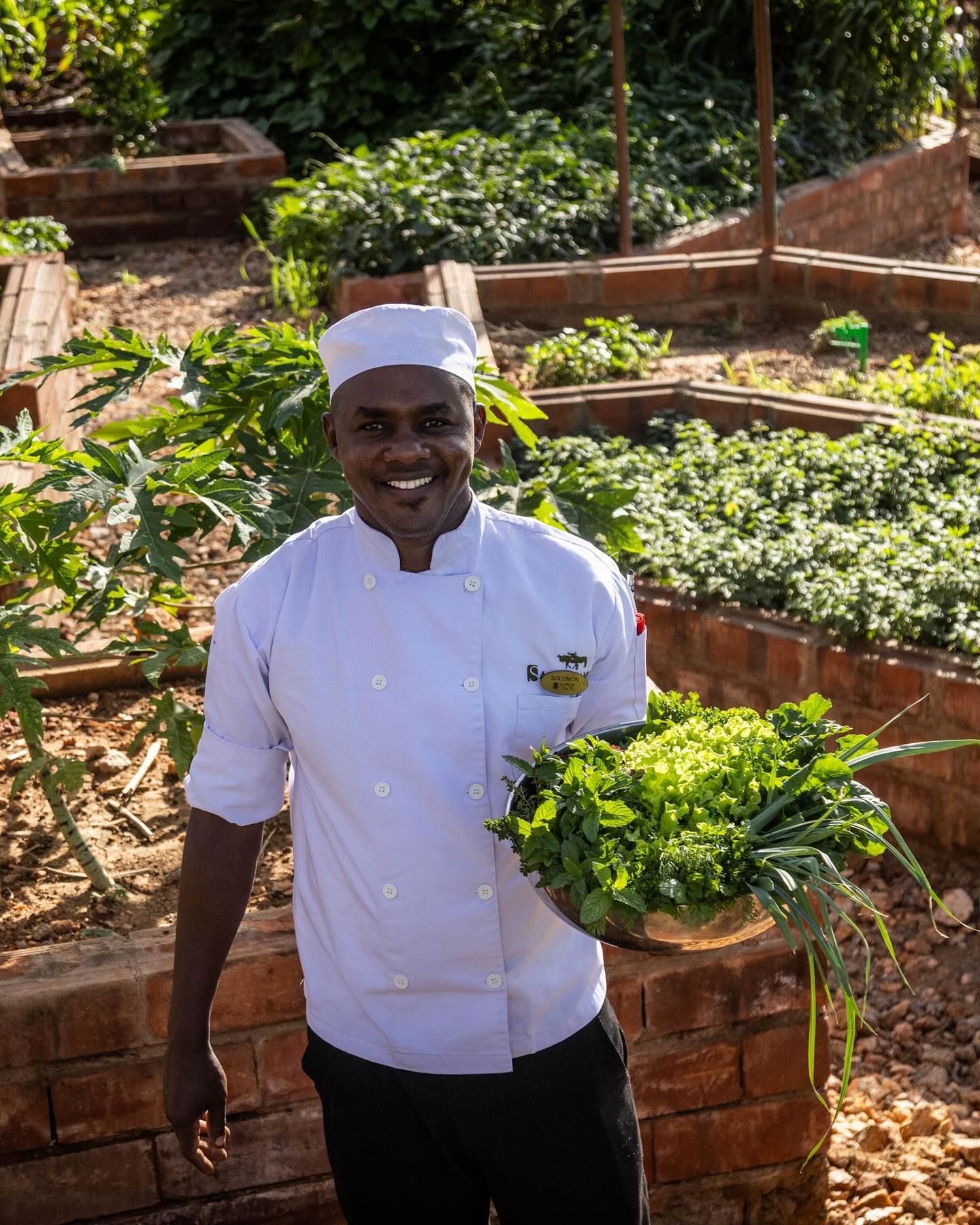
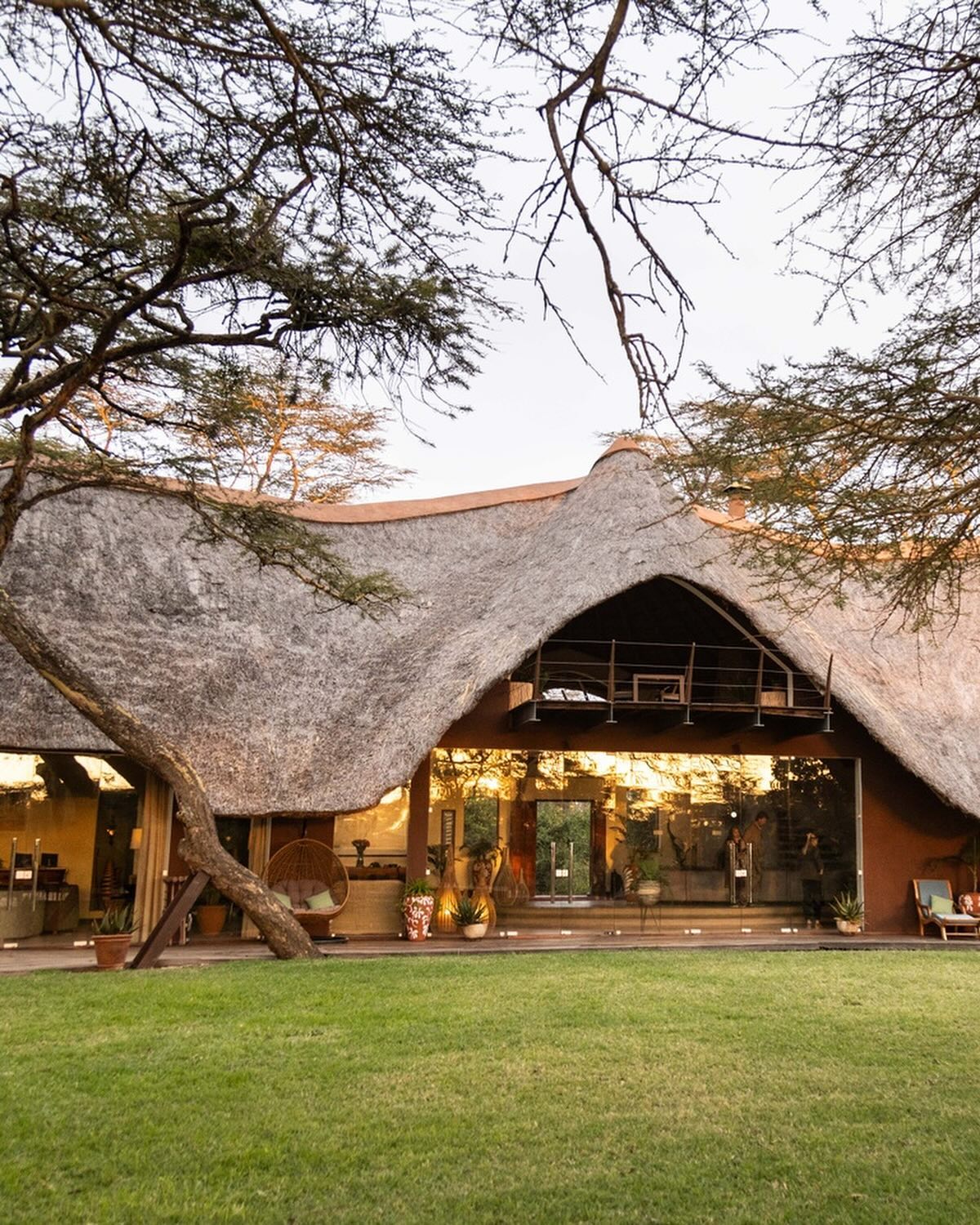
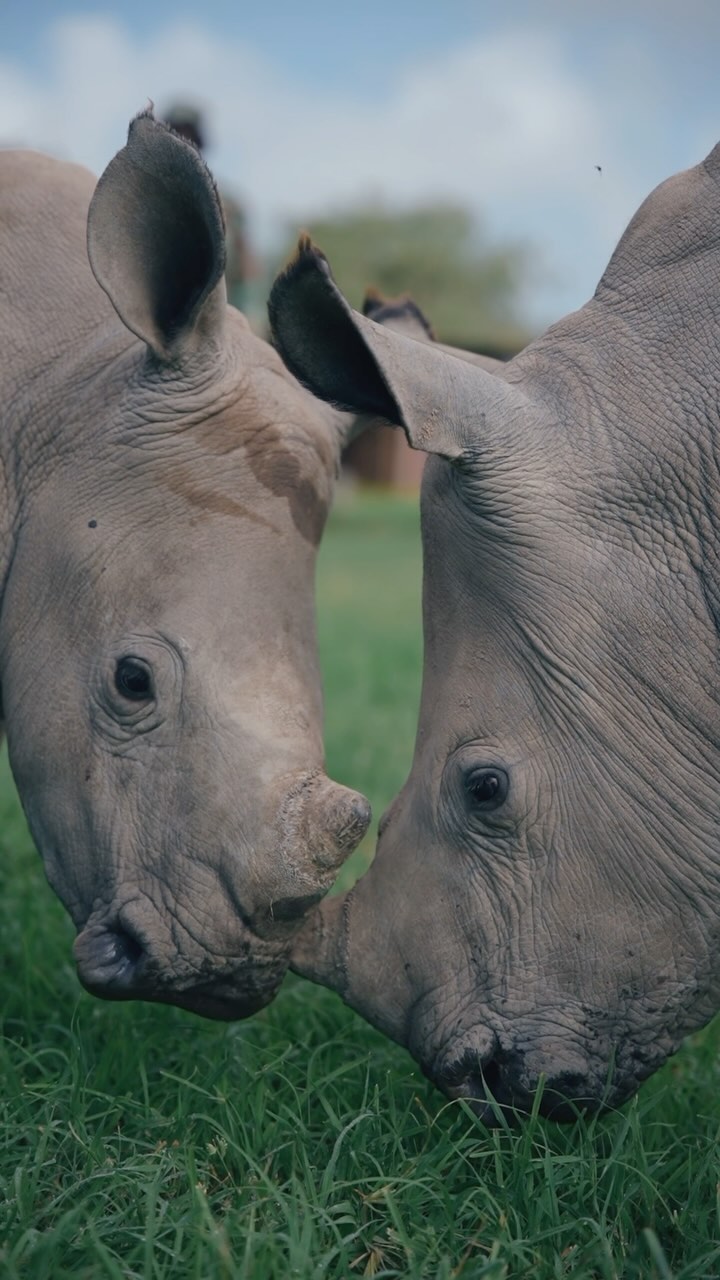
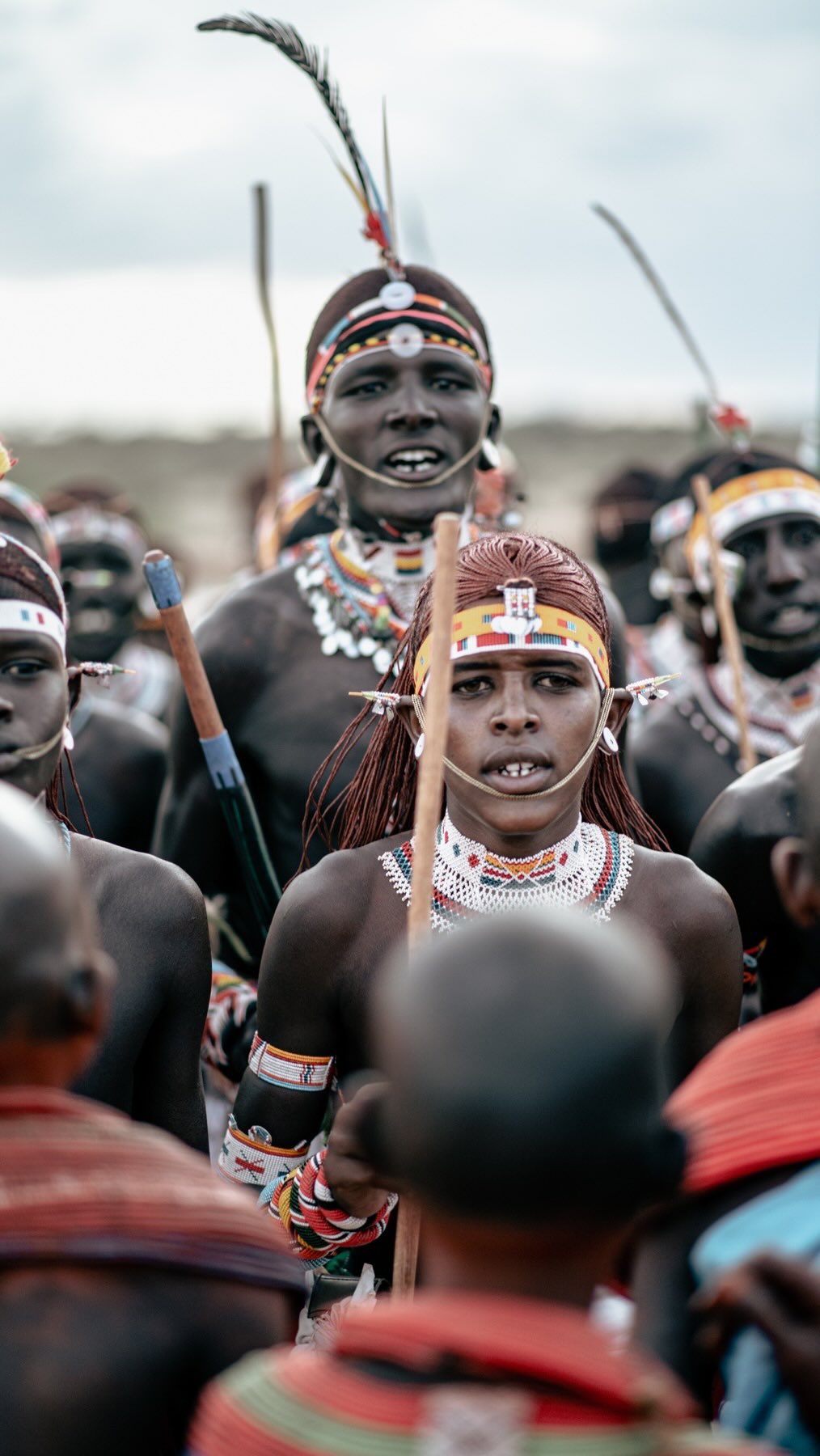
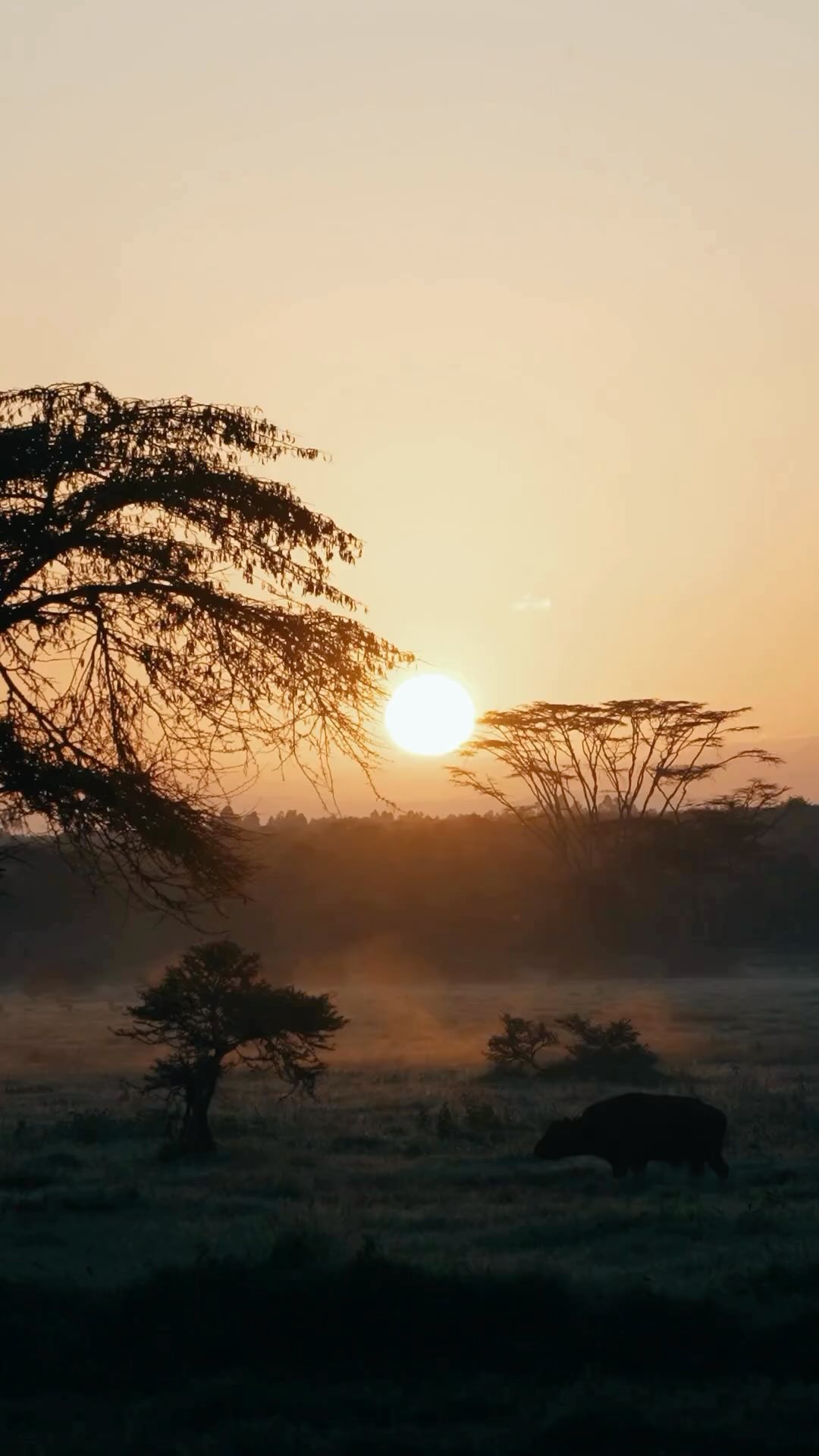
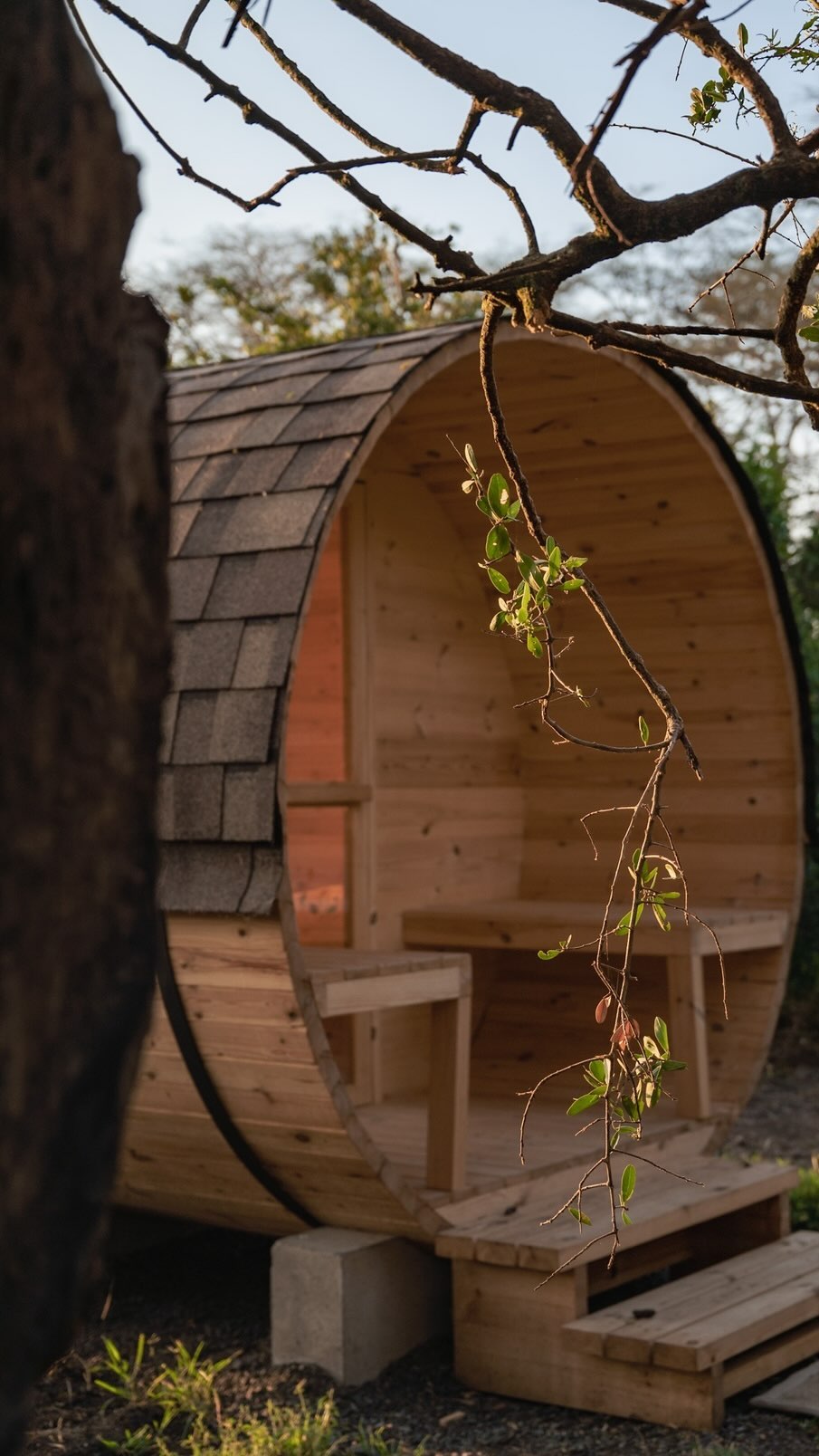

CONNECT & FOLLOW